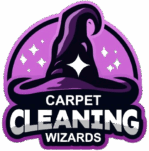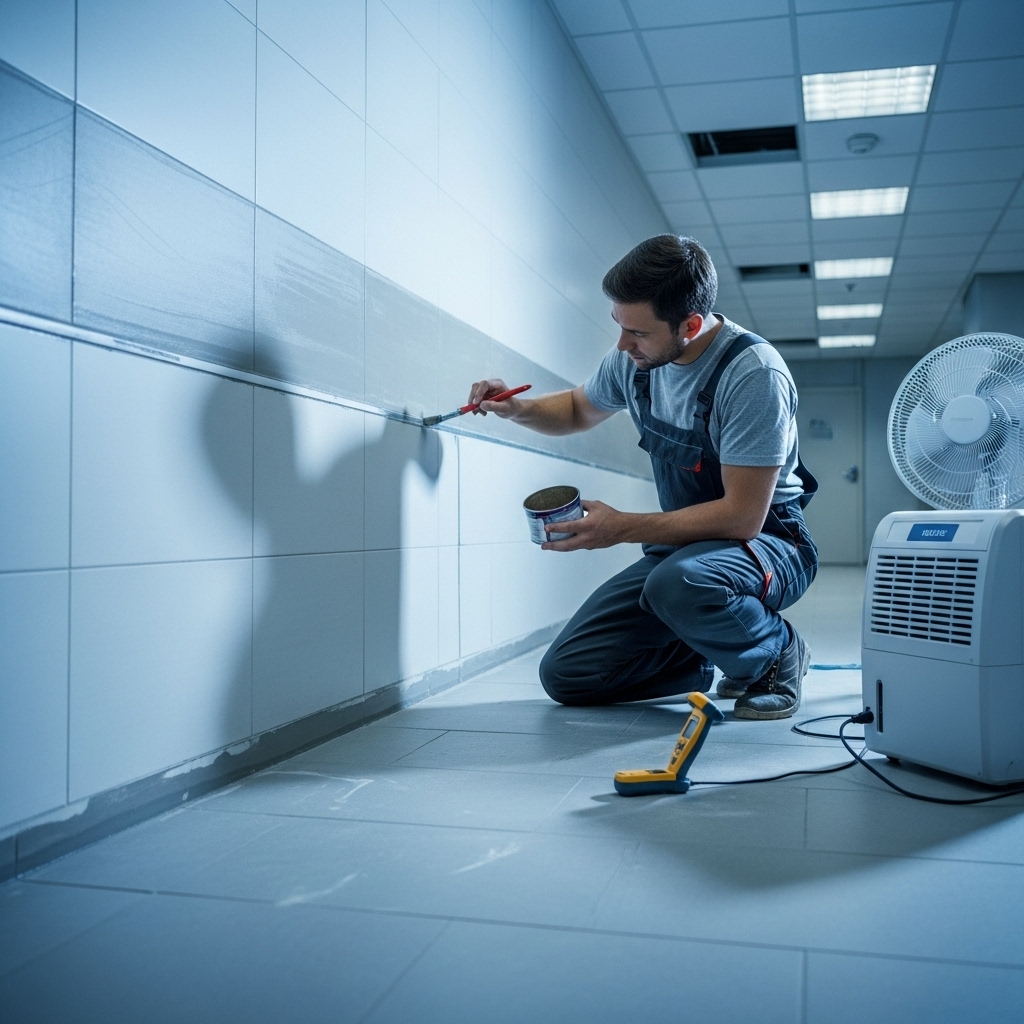Even with a solid routine, tile and grout in Elizabeth, New Jersey can present stubborn challenges: cloudy films that won’t rinse, grout lines that re-darken after drying, strange odors near bathrooms, or etched patches that refuse to shine. This troubleshooting guide helps you diagnose and fix the most common issues caused by local conditions like winter salt, summer humidity, hard water, and heavy foot traffic. If a problem persists despite your best effort, consider bringing in seasoned tile and grout cleaning pros who can reset surfaces with the right chemistry, heat, and sealing.
Problem: Cloudy, Streaky Tile After Mopping
Diagnosis: Residue from over-concentrated cleaner, dirty mop water, or hard water minerals has created a film that diffuses light. This is common after busy weeks when mopping outpaces rinsing, or when a single bucket is used for both wash and rinse.
Fix: Adopt a two-bucket method with fresh rinse water, use correct dilution, and perform a final neutral rinse. On ceramic or porcelain, a light application of a mineral remover followed by a thorough rinse can lift films. On natural stone, avoid acids and opt for an alkaline cleaner, soft pad agitation, and a clean water rinse. Increase airflow for faster drying to reduce water spots.
Problem: Grout Looks Clean Wet, Then Dries Dark
Diagnosis: Soils are embedded below the surface, or moisture is wicking up from the substrate. Cementitious grout is porous; if not sealed or if the sealer is exhausted, it will absorb and hold stains that reappear as it dries.
Fix: Perform a targeted deep clean with a quality alkaline solution and grout-focused agitation. Rinse and extract thoroughly, then allow full drying—use fans and dehumidification if necessary. If staining persists, apply an oxygen-based booster for organic discoloration. After true dryness is confirmed, apply a penetrating sealer or consider color-sealing for uniform appearance and long-term stain resistance.
Problem: Persistent Bathroom Odors
Diagnosis: Odor-causing residues linger in porous grout, along toilet bases, or behind failing caulk, especially in humid bathrooms. Mop-only cleanings redistribute contamination without fully removing it.
Fix: Use enzymatic cleaners targeted at organic residues. Detail-brush around fixtures, then rinse and extract thoroughly. Replace deteriorated caulk and address ventilation: run fans longer, crack a window when possible, and keep shower doors open after use. Only seal once odors are fully eliminated and the area is dry.
Problem: White Crust Or Powder On Tile Or Grout
Diagnosis: Efflorescence—salts migrating to the surface as water evaporates—often appears in basements, entries, or areas near exterior walls. In winter, deicing salts can contribute to this powdery residue.
Fix: Dry sweep or vacuum first, then use a compatible mineral remover on ceramic or porcelain and rinse thoroughly. Prevent recurrence by improving drainage, repairing leaks, and sealing grout once fully dry. Avoid trapping moisture with sealer if underlying dampness remains.
Problem: Etched, Dull Spots On Stone
Diagnosis: Acid exposure on marble, limestone, or travertine has dissolved microscopic layers, leaving a dull patch that resembles a watermark. Vinegar, lemon juice, or harsh bathroom cleaners are frequent culprits.
Fix: Cleaning alone will not restore etched stone. You will need honing and polishing using stone-safe abrasives or a professional refinishing service. After restoration, use pH-neutral cleaners exclusively and consider a stone sealer for added protection.
Problem: Sticky Floors That Attract Dirt
Diagnosis: Surfactant residue from over-dosed cleaning products or insufficient rinsing leaves a tacky film that grabs soil and quickly looks dirty again.
Fix: Conduct a thorough rinse cycle using clean, warm water, then perform a light neutral cleaner rinse at proper dilution. Increase pad changes and switch to microfiber mops that release soil more effectively. Train household members or staff on correct mixing ratios.
Problem: Grout Cracking Or Hollow-Sounding Tiles
Diagnosis: Subfloor movement, improper installation, or moisture intrusion can cause cracks and voids. Cleaning can reveal these issues by lifting soil that previously camouflaged defects.
Fix: Repair comes before cleaning. Regrout or recaulk as needed and address any structural issues. Once repairs cure, resume deep cleaning and sealing to protect the renewed joints.
Mid-Cycle Reset When Results Plateau
If your routine yields diminishing returns, insert a short reset: dry vacuum edges, apply an alkaline cleaner with a 10-minute dwell, agitate grout with a narrow brush, and extract thoroughly with a wet vac. For bathroom film that returns quickly, alternate neutral rinses with gentle mineral removal on compatible surfaces. When time is tight or problems persist, booking professional tile and grout cleaning provides the combination of heat, flow, and sealing that DIY methods often can’t match.
Seasonal Adjustments For Elizabeth Homes And Businesses
Winter: Increase entry maintenance to capture salt before it spreads. Vacuum mats, swap them frequently, and perform quick neutral mops of foyers and corridors.
Spring: Address efflorescence in basements or near exterior doors as thaw cycles drive moisture through masonry. Repair leaks and improve drainage before sealing.
Summer: Manage humidity with ventilation and dehumidifiers, particularly in bathrooms and ground-level rooms. Longer fan runtimes improve drying and odor control.
Fall: Do a pre-winter deep clean and reseal grout to prepare for the salt season. Replace worn-out tools like pads and brushes.
Advanced Tips For Stubborn Stains
- Use oxygen-based boosters on organic stains such as coffee, wine, or food dyes. Allow dwell time for best results.
- Apply solvent boosters sparingly for greasy residues, then follow with an alkaline rinse to emulsify and remove.
- Target rust or metallic stains with specialty removers designed for tile; avoid harsh acids on stone.
- For pet urine, pair enzymatic treatments with thorough extraction and drying before sealing.
Protective Sealing Without Pitfalls
Sealer is a shield, not a cure-all. Apply only to clean, dry grout. Work in small sections and buff off excess to prevent haze. Test water beading to verify protection and schedule reseals based on traffic and results. In high-traffic or badly stained areas, color-sealing can deliver a uniform appearance and robust stain resistance that outlasts clear seal alone.
Frequently Asked Questions
Q: Why does my grout keep darkening again after cleaning? A: Embedded stains or moisture wicking from below are likely. Deep clean, fully dry, then seal or color-seal to block reabsorption.
Q: Can I use bleach to kill mildew? A: Bleach can lighten stains but may degrade grout and does not remove the underlying residue. Enzymatic cleaners followed by thorough rinsing are more effective for long-term odor control.
Q: What’s the safest approach for mixed surfaces? A: Segment the area by material. Use neutral or alkaline on stone, and reserve mineral removers for ceramic or porcelain. Keep tools separate to avoid cross-contamination.
Q: How do I know if sealer is still working? A: Water should bead on the grout for at least a minute. If it darkens immediately, it’s time to reseal.
Q: Is steam a good option? A: Controlled steam helps loosen soil but should be paired with immediate extraction and caution around loose tiles or cracked grout.
Q: Will color-sealing look painted? A: A quality color-seal looks like fresh, uniform grout, not paint. Proper surface prep and careful application are essential.
Build A Reliable Troubleshooting Routine
Keep a simple log of issues, products used, and outcomes. Adjust dilution ratios, dwell times, and agitation based on results. Replace worn brushes, pads, and mop heads regularly. Inspect high-risk zones—entries, kitchens, around toilets—monthly for early signs of film, odor, or moisture intrusion. With a methodical approach and timely sealing, even persistent problems can be resolved and kept at bay.
Get Confident, Lasting Results
Whether you are battling cloudy tile, stubborn grout stains, or recurring odors, a focused troubleshooting sequence restores clarity and hygiene. If time is short or problems outpace your tools, team up with local specialists who can diagnose issues fast and apply the right solutions. Reclaim bright, clean surfaces by arranging trusted tile and grout cleaning and enjoy floors that look and feel truly refreshed.

